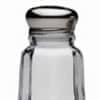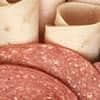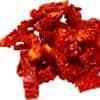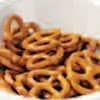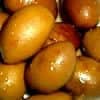1. YOU DON’T EAT ENOUGH (FOR FEAR OF GETTING FAT)
Yes, extra calories can mean extra belly fat, but if you’re lifting consistently and correctly, most of what you’re taking in should be converted to muscle. The truth is your muscles will never grow without a surplus of calories. For a lean guy looking to put on muscle mass, 2,000 calories a day won’t cut it. In fact, this kind of restricted diet is actually the ideal recipe for losing muscle tis- sue and sparing fat, as it causes the body to shift into starvation mode and shed calorie-consuming muscle. It also makes you store fat for emergency energy. And the less protein you eat, the less of a chance you give your muscles to recover after a workout.
2. YOU AMP UP YOUR CARDIO
There are three ways that cardio typically cancels out muscle gains: doing it too often, doing it for too long, or doing it on an empty stomach. In general, daily cardio sessions simply burn too many cumulative calories to allow you the surplus you need for muscle mass, and the same can be said for sessions that last 45 minutes or more. Work out in the morning before breakfast and you only compound the problem. When you wake up, your body is already in a catabolic (muscle-burning) state, since a night’s sleep—time spent without eating—empties your tank. Working out immediately just reinforces this condition and costs you intensity—whether on the treadmill or with the weights. The end result: You burn muscle as fuel in place of calories you should have consumed at breakfast.
3. YOU WORK TO EXHAUSTION
If the biggest musclehead in the gym has taught us anything, it’s that doing lots and lots of sets and reps to the point of total collapse (he can’t even muster his signature grunt!) is the best way to build muscle. Never mind that he’s a genetic freak and/or probably on steroids. More than 20 total sets per muscle group, or more than 15 reps per set, may leave your muscles swollen (hence the ego-enhancing “pump”), but it will be from inflammation, not actual muscle growth. Any weight that allows that much work is too light to cause sub-
stantial growth, and you’ll reap no lasting gains.
4. YOU FAVOR BODY-PART WORKOUTS
Breaking your training down into chest days, back days, and arm days over- works some muscles and neglects others. It’s an old-school way to train—and it’s incredibly outdated. Most guys still do it, and many make gains for a while, but their progress eventually comes to a halt, usually due to injuries. Body-part routines also prevent your biggest muscles from ever learning to work together in the kinds of coordinated effort you need to lift really heavy weights—another major avenue for fast growth.
5. YOU SHUN STRETCHING
Boring? Definitely. But stretching has been shown to speed up recovery and increase a muscle’s range of motion, making more room for muscle fibers to grow. Simply lifting weights will increase your risk for injury and se- verely limit your ability to move athletically—so no matter how big you are, you’ll probably be picked last for teams.
6.YOU ONLY EAT SPORADICALLY
It’s true: Eating infrequently is nearly as bad as not eating at all. When you go more than three hours without food, your metabolism slows significantly.When that happens, every time you do get a meal, there’s a good chance that a large percentage of it will be stored as fat. Why?Blame your body. Without food, it slips back into starvation mode and starts to think it needs to hold on to every calorie it can get.
7. YOU RARELY ALTER YOUR ROUTINE
Doing the exact same workout week after week will, at best, prevent new gains, and, at worst, lead to burnout. Failing to impose any new challenges on your muscles—such as by increasing the weight you use or the number of reps you perform—simply helps keep them the same size, whereas pushing yourself harder than you’re accustomed to will actually spur new muscle and strength.
8.YOU ONLY TRAIN WHAT YOU SEE IN THE MIRROR
Focusing your workouts on trophy muscles such as the pecs and biceps may be more fun, but it won’t do much for your overall development. Since 70% of your body’s total musculature is located in your legs and back, your main potential for muscle gains will remain untapped. Furthermore, this kind of trainingwill leave you with muscle imbalances that lead to injury—and that can keep you out of the gym permanently.
9. YOU DON’T DRINK SHAKES
Chugging a protein-and-carb mixture after your workout starts the recovery process immediately, replenishing lost glycogen (your muscles’ energy stores) and providing the nutrients your body requires to repair muscle and grow more of it. Skipping the shake and casually waiting an hour or more for your next meal is like ignoring a cry for help.
10. YOU DON’T GET ENOUGH REST
Sleep is when muscle repair happens, so getting six or fewer hours of shut-eye a night limits your body’s natural production of crucial muscle-building chemicals, such as growth hormone. Too much activity outside of your workouts, such as playing sports, all-night dance parties, and extra stress—all of which are permissible now and then, but dangerous in excess—also cut into muscle gains.












